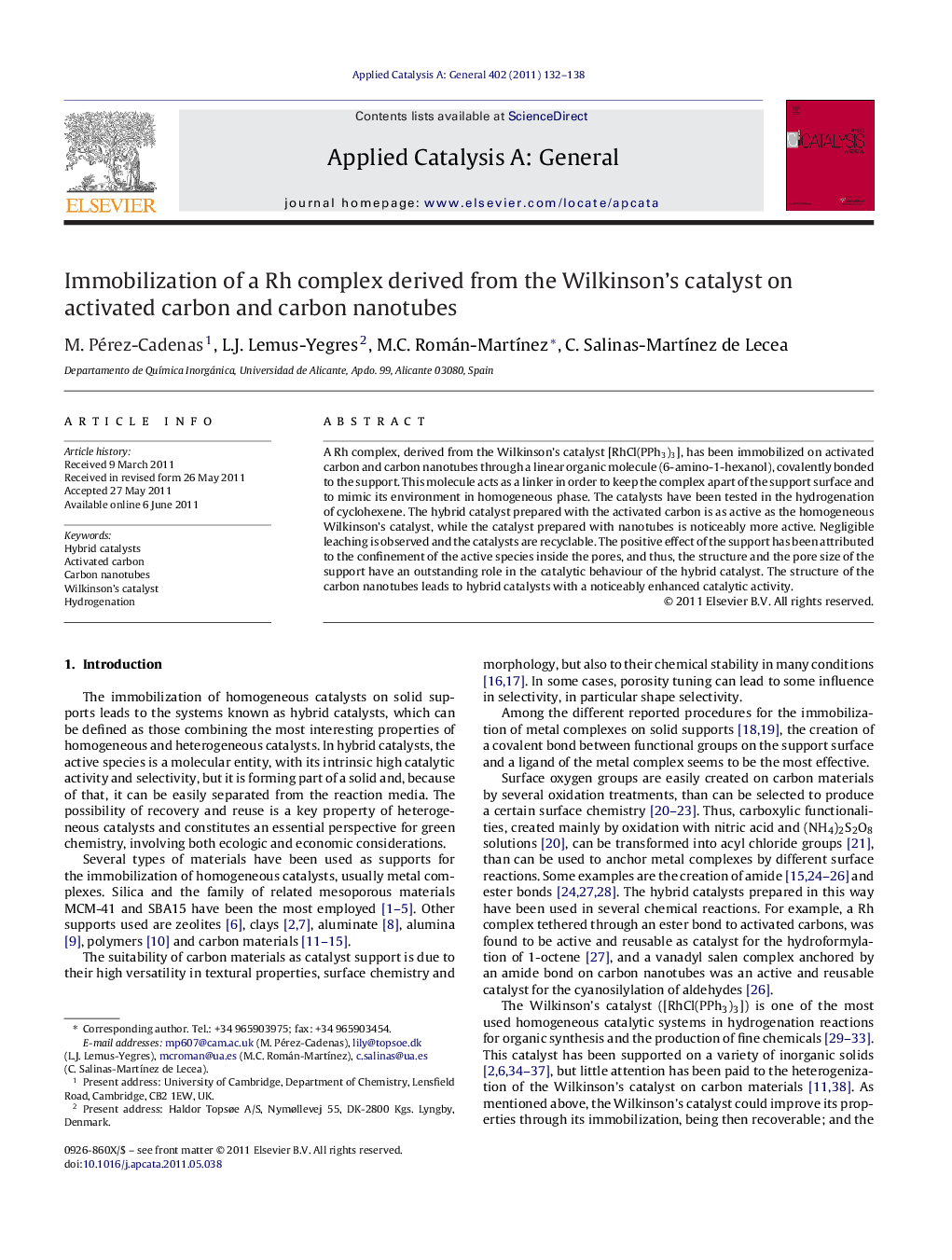| Article ID | Journal | Published Year | Pages | File Type |
|---|---|---|---|---|
| 41248 | Applied Catalysis A: General | 2011 | 7 Pages |
A Rh complex, derived from the Wilkinson's catalyst [RhCl(PPh3)3], has been immobilized on activated carbon and carbon nanotubes through a linear organic molecule (6-amino-1-hexanol), covalently bonded to the support. This molecule acts as a linker in order to keep the complex apart of the support surface and to mimic its environment in homogeneous phase. The catalysts have been tested in the hydrogenation of cyclohexene. The hybrid catalyst prepared with the activated carbon is as active as the homogeneous Wilkinson's catalyst, while the catalyst prepared with nanotubes is noticeably more active. Negligible leaching is observed and the catalysts are recyclable. The positive effect of the support has been attributed to the confinement of the active species inside the pores, and thus, the structure and the pore size of the support have an outstanding role in the catalytic behaviour of the hybrid catalyst. The structure of the carbon nanotubes leads to hybrid catalysts with a noticeably enhanced catalytic activity.
Graphical abstractFigure optionsDownload full-size imageDownload high-quality image (137 K)Download as PowerPoint slideHighlights► Activated carbon and carbon nanotubes are suitable supports for the Wilkinson's catalyst. ► The immobilized Wilkinson's complex is active in hydrogenation and reusable. ► The catalyst prepared with carbon nanotubes is more active than the homogeneous complex. ► The positive effect of the support is explained by a confinement effect.
